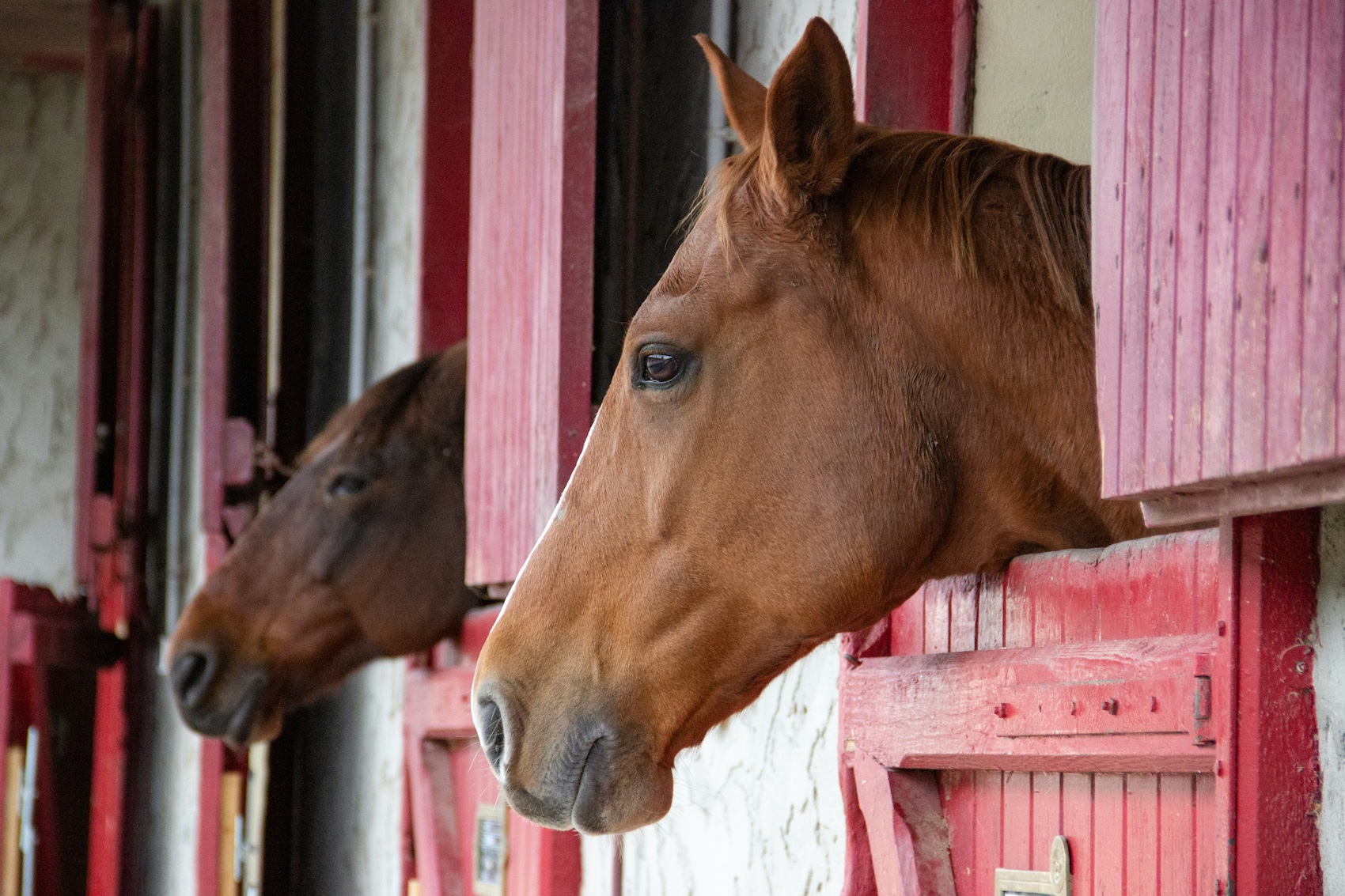Your cart is currently empty!

Rehabilitating a horse with back pain
Horses can suffer musculoskeletal pain and injuries anywhere along the axial skeleton that comprises the skull, vertebral column, sternum, and ribs. Bringing these horses back to form and into work post-injury can be difficult, time-consuming and super frustrating, but possible thanks to both time-tested mobilization exercises and rehabilitation techniques.
After a thorough clinical exam and movement evaluation, the first technique of rehabilitation is to obtain progressive movement and mobilization of the affected areas. The main idea behind rehab, is to restore a horse’s normal motion.
Owners can perform various mobilization techniques when the horse is cold (before being exercised), warming up, and warmed up.
Cold exercises include:
Stretching exercises such as carrot stretches to engage the cervical and thoracic spine
Massage
Walking in-hand forward, backward, and on a figure-eight.
When the horse is warming up:
Electrical stimulation – NMES or TENS
Applying weighted boots around the hind pasterns to improve proprioception, increase hip, stifle, hock, and ankle flexion;
Working on a longe line with a training device—such as side reins, a chambon, a gogue, or a pessoa rig—to encourage the horse to move and use his body properly. The trainer or rider will need to be trained to use these aids effectively.
And once the horse is warmed-up:
- Working on different footings and slopes: Uphill work promotes engagement and abdominal wall contraction. Downhill work increases passive engagement and will be challenging for horses suffering from sacroiliac joint disease. Deep footing will make the horse elevate its hind limbs more. Firm footing increases vibration and is not indicated for horses with joint or bone diseases such as kissing spines and facet joint disease.” Trotting over poles to induce conscious proprioception and more hip and gluteal muscle function.
- The exercises or training done under saddle is very dependent on what are is being rehabilitated:
Thoracic pain Allow these horses to move freely on the longe line as part of their warm-up, because they tend to counterbend when cold. Make sure the line is loose and the circle size large – greater than 20 meters. Avoid using a surcingle, which can increase longissimus muscle tension, supraspinous pain, and kissing spines issues. The choice and fit of saddle is paramount for this type of back issue.
Thoracolumbar and lumbar pain Walk these horses for a long time (approx. 20 mins) before trotting. Some horses feel better cantering instead of trotting because there is less axial movement of the spinal column, canter for a couple minutes in each direction before trotting. In cold regions or seasons cover the back area with a warm rug while working.
Lumbosacral and pelvic or sacroiliac pain Walk these horses for 20 mins before working and canter briefly before trotting. Under tack perform progressive half passes to engage the pelvis after warming up. Don’t work in tight circles, instead work on concentric circles (starting 50 to 60 feet wide and getting progressively smaller) to encourage the horse to bend more and lean in less, ultimately pushing more with his inside hind leg.
Modalities are helpful to ensure success:
- Massage can increase blood flow and relieve muscle spasms. Many massage techniques are available, but this would be the first modality to offer to owners and grooms working on their own horses.
- Laser can be used to stimulate specific myofascial trigger points and aid healing.
- Therapeutic ultrasound can increase blood flow, relax muscles, and stimulate trigger points. Kinesiotape applied to limit certain joints’ movement can relax or strengthen muscles, support ligaments, stimulate circulation, and decrease inflammation, depending upon how and where it’s applied.
- Electrotherapy uses various instruments—such as transcutaneous electrical nerve stimulators, interferential stimulators, neuromuscular and functional electrical stimulators, galvanic muscle stimulators, and microcurrent electrical stimulators—to stimulate nerves and decrease pain.
- Shock wave therapy can help treat myofascial pain and muscle spasms.
- Magnetic therapy might enhance blood vessel formation.
- Cryotherapy using anhydrous nitrogen can stimulate and relax sore muscles.
- Hydrotherapy, including water treadmill use and swimming, helps the horse strengthen his muscles without overloading the limbs if, say, he also had surgery recently.
- Saddle adjustment to ensure a proper fit can help avoid or eliminate muscle spasms.
Some of these techniques are being scientifically evaluated, but practitioners have used many of these tools to help horses recover quicker. The main techniques used today are massage, TENS therapy, and stretching; however, functional electrostimulation and therapeutic ultrasound or kinesiotaping can hopefully be used for other serious issues in the future.
Owners should work with their veterinarians and other practitioners to determine which rehabilitation techniques and exercises are appropriate for their particular horse’s injury and discipline. Back problems are often linked to lower limb issues. Working with your veterinarian to ensure the horse remains sound and monitoring the horse’s topline muscle for any asymmetries.